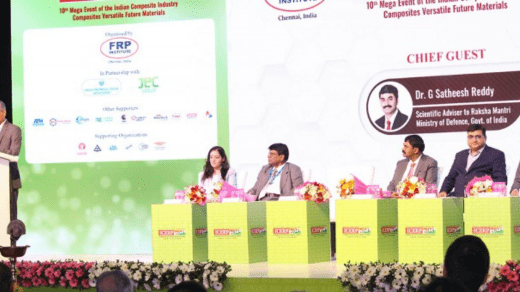Fresh defense contractors often feel confident about their readiness—until the assessment clock starts ticking and small scoping gaps become major delays. The jump from “general IT hygiene” to handling CMMC Controls tied to federal contract data reshapes how the infrastructure is viewed, documented, and verified. What follows breaks down the missteps contractors hit most often and how each one silently compounds into heavier lift later.
Scoping Mistakes That Overlook Where Sensitive Data Actually Lives
Many teams assume their boundary ends at the obvious systems, stopping after endpoint inventories and cloud applications. The reality is that Controlled Unclassified Information often lands in indirect locations—chat logs, cached email attachments, unmanaged file sync tools, or outdated repositories that never got formally retired. The CMMC scoping guide calls out data lineage as a foundational checkpoint because auditors want clarity before control evidence gets mapped.
Less-visible technical sprawl leads reviewers to ask for deep traceability, especially for cmmc level 2 compliance. A rushed discovery phase pushes contractors into awkward late-stage cleanups that could have been prevented with structured CMMC pre assessment scoping. This is where early CMMC compliance consulting can prevent wasted hours by showing what “in scope” actually means once CUI moves across the environment.
Misaligned Roles That Leave Accountability Unclear During Review
Teams often draft policies that sound complete but never attach real ownership to the safeguard being described. Without defined accountability, a C3PAO or assessor will ask, “Who proves this control is performed and monitored?” and the room goes silent. CMMC consultants recommend mapping control responsibility to roles, not to departments, so tasks do not drift.
Confusion also interrupts remediation tasks once preparing for CMMC assessment moves from planning to proof. Policy gaps swell when engineers think security is “someone else’s checklist,” which turns into review friction. Mature government security consulting services typically pair every safeguard with a named authority, so traceability is visible long before audit week arrives.
Tool Adoption Without Matching Policy or Process Guardrails
Contractors sometimes deploy a tool thinking technology equals compliance. A scanner, SIEM, or MDM has no value if nobody governs how alerts are handled, logged, or traced against CMMC Controls. For both CMCM Level 1 requirements and CMCM Level 2 requirements, written enforcement guardrails matter more than the product itself.
A mismatch between tools and governance shows up immediately in the Intro to CMMC assessment phase. Assessors look for evidence of “repeatable operations,” not just licenses. Consulting for CMMC typically urges teams to finalize workflow accountability first so the tech stack actually reinforces documented behavior rather than replacing policy substance.
Vendor Reliance That Creates Blind Spots in Shared Responsibility
Third-party services feel convenient until a CMMC assessor asks for contractual evidence proving security obligations are shared and enforced. A vendor handling backups or cloud hosting might protect its own infrastructure, yet never guarantee FedRAMP-aligned handling of CUI sitting on tenant resources. Contractors must understand what is an RPO, who a CMMC RPO is, and which obligations the contract really covers.
Reliance without confirmation leaves gaps the assessor must score. CMMC RPO guidance regularly warns that commercial “as-a-service” providers do not shoulder policy responsibility for the customer’s environment. Independent compliance consulting helps organizations confirm the right clauses exist before depending on inherited security.
Legacy Systems That Cannot Meet Modern Baseline Expectations
Older appliances, unpatched servers, and out-of-support software add invisible risk until an assessor asks for hardening evidence. Legacy solutions rarely meet updated baselines tied to Cmmc security hardening or encryption. Aging systems also prolong POA&M work because each patch forces extra compatibility checks.
Retirement decisions often stall because no one wants outage risk before a contract award. Yet CMMC compliance requirements expect modernization or isolation—not excuses. This is typically where outside CMMC consultants advise segmenting outdated assets so the core scope can pass without inheriting brittle systems.
Resource Constraints That Stall Remediation Mid-stream
A company may start strong, but remediation depends on staffing bandwidth. If a security lead also wears the IT operations hat, burn-down work slows, documentation slips, and evidence trails age out. Limited bandwidth is more damaging than missing tooling because assessments measure consistency.
Contractors pursuing CMMC level 2 compliance frequently learn that remediation scheduling must compete with live production issues. Managed service support or specialized government security consulting can bridge this workload before the audit window closes, smoothing the last mile before the C3PAO review.
Internal Fatigue Once the Compliance Lift Turns into Daily Upkeep
Teams treat CMMC like a one-time finish line, but the maintenance posture is where maturity is proven. Once the pressure of “getting certified” fades, habitual drift appears: fewer log reviews, weaker onboarding controls, and stale documentation. The assessor will check these signals during renewal.
Routine muscle memory keeps readiness stable, which is why some contractors retain an external advisor for continuous posture tuning. A firm specializing in CMMC compliance consulting keeps cadence alive so program upkeep does not evaporate once leadership attention shifts.
Post-assessment Drift That Erodes Progress Before Renewal Arrives
The months after an initial assessment feel restful until a contract triggers recertification. If safeguards lose discipline, the next CMMC assessment feels like starting over. Continuous posture checks limit rework and block technical debt from creeping back into the boundary.
This final stretch is where a mature CMMC RPO serves as a safety net by reconciling scoping boundaries, documenting proof again, and validating control evidence before renewal. A specialized provider of consulting for CMMC helps maintain guardrails year-round so contractors don’t regress between audit cycles.




